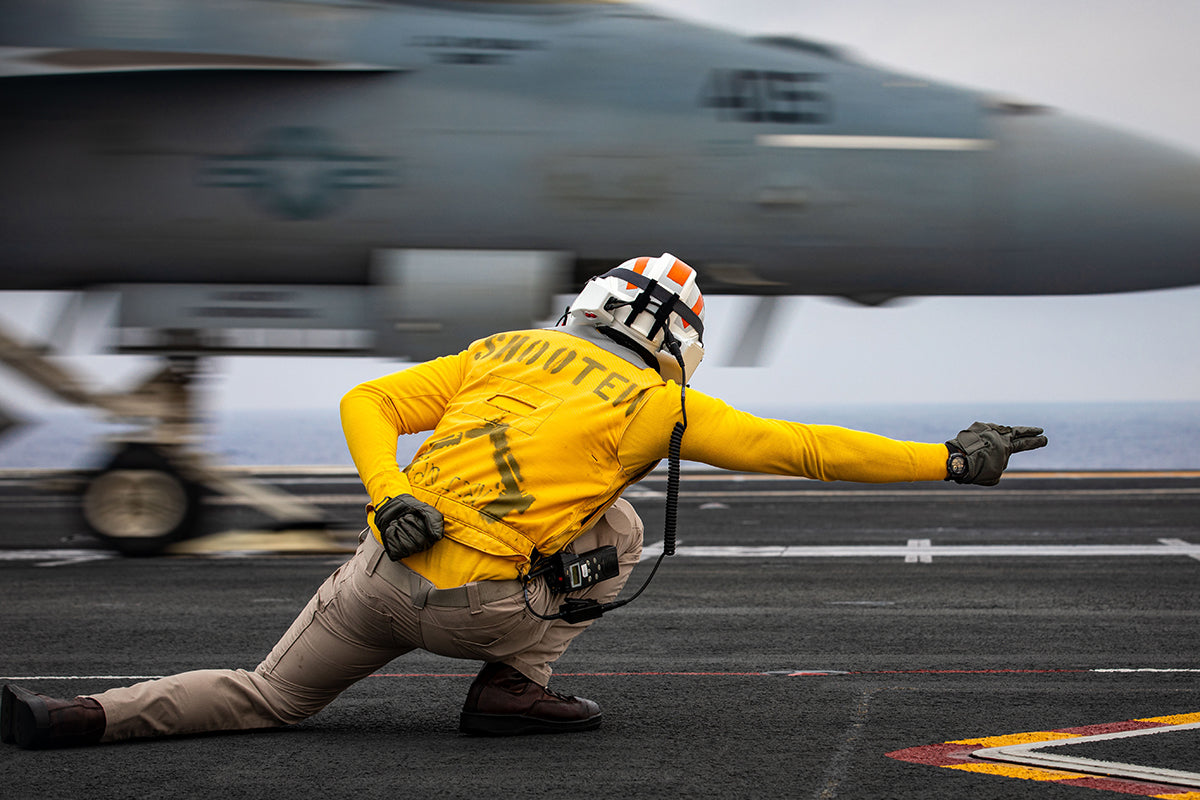Warfighter hearing is vital to Naval Aviation mission success, yet noise-induced hearing damage is the Defense Department’s most prevalent injury. To address this serious issue, the Naval Air Warfare Center Aircraft Division’s research and development efforts have forged an opportunity to align forces with Navy Dentistry to use existing digital-imaging technology to create custom earplugs for warfighters.
“If you cannot communicate face to face or effectively use a radio/internal comms, your performance and ability to function on a team significantly decreases,” said LCDR Kyle Shepard, head of NAWCAD’s Helmet Systems and Auditory Performance.
“I started exploring what was happening in the world in the 3D printing space and who is cost-effectively implementing that capability,” LCDR Shepard continued. “From there, I started to rescope our project focusing on independent manufacturing of custom hearing protection. I reached out to counterparts working in Navy Dentistry to explore potential collaboration due to their success and established processes in 3D printing of biomedical materials.”
After LCDR Shepard and his team at NAWCAD validated a digital scanning technology for creating custom hearing protection, they began offering this solution to the fleet. The feedback, according to LCDR Shepard, was overwhelmingly positive. Sailors and Marines appreciated the faster, more comfortable and accurate fitting e xperience. The Sailors received their custom earplugs more quickly than previous experiences. Partner services, including the Army and Air Force, are already interested in scaling custom hearing protection.
“The dental community has been using 3D printing for a few years now. They have trained technicians able to use and maintain these printers with growing applications in medicine. Our hope is to leverage this existing capability by proving these same printers can also make custom hearing protection that is as effective as one made by an external vendor,” said LCDR Shepard.
Digital-imaging technology can provide service members with custom hearing protection more efficiently and with less risk. The improved process is safer and will cut delivery time by at least 50 percent.
Additionally, when seeking a custom ear plug the digital scan technology can provide more reliability than older methods in obtaining deep impressions within the inner ear canal, which are essential for communication earplugs.
“Using the traditional method, heat and humidity can warp the physical impression while being mailed to the vendor. The process is long and cumbersome, and the turn-around time to receive the earplugs can be several weeks stateside and two to six months internationally,” said LCDR Shepard.
Digital scanning removed the risk of physical warping while expediting the process.
“Audiologists across the Navy agree the best hearing protection is one a Sailor is most comfortable using, fits and is appropriate for the environment they operate in,” said LCDR Shepard. “We’ve seen that custom earplugs can provide improved consistency in attenuation with less fit variability when compared to standard earplugs because they’re specifically made for the wearer and are easier to properly insert.”
The commercial scanner features a small probe that inserts into a Sailor’s ear to capture a digital image of the ear canal. This capability offers Sailors a faster, safer, more comfortable and more consistent fitting experience compared to the current method of custom fittings. The traditional process involves injecting silicone into the ear canal, waiting for it to set, and then carefully extracting the molds. Using a physical impression process can be slow, tedious, and sometimes painful or dangerous, especially if a Sailor has a small or uncommonly shaped ear canal, sensitive ears or other anatomical challenges.
A training program to become certified to use the digital scanner is now being established and will be available for commands that are interested.
“Several large medical commands are already 3D-printing biomedical materials for things like dental implants and prosthetics,” said LCDR Shepard. “The only missing pieces are a digital ear scanner and imaging software that will enable our independent manufacturing of custom hearing protection in the military.”
Many Navy commands can eventually print out the plugs immediately in-house, especially where they have already integrated 3D printing in medicine.
LCDR Shepard and his team of aeromedical engineers are ready to support any command interested in getting in touch to see how they can start offering custom hearing protection to their warfighters today.
“Let’s start getting after the defense’s most reported injury,” said LCDR Shepard. “Where are our commands with the largest need? Our major training and medical commands already have the printers we will eventually use for independent manufacturing of custom hearing protection. Reach out to me so we can get these scanners and train to expand the care our service members need.”
Article: NAE News – Naval Aviation Enterprise – Volume 1, Issue 8, May 2023

